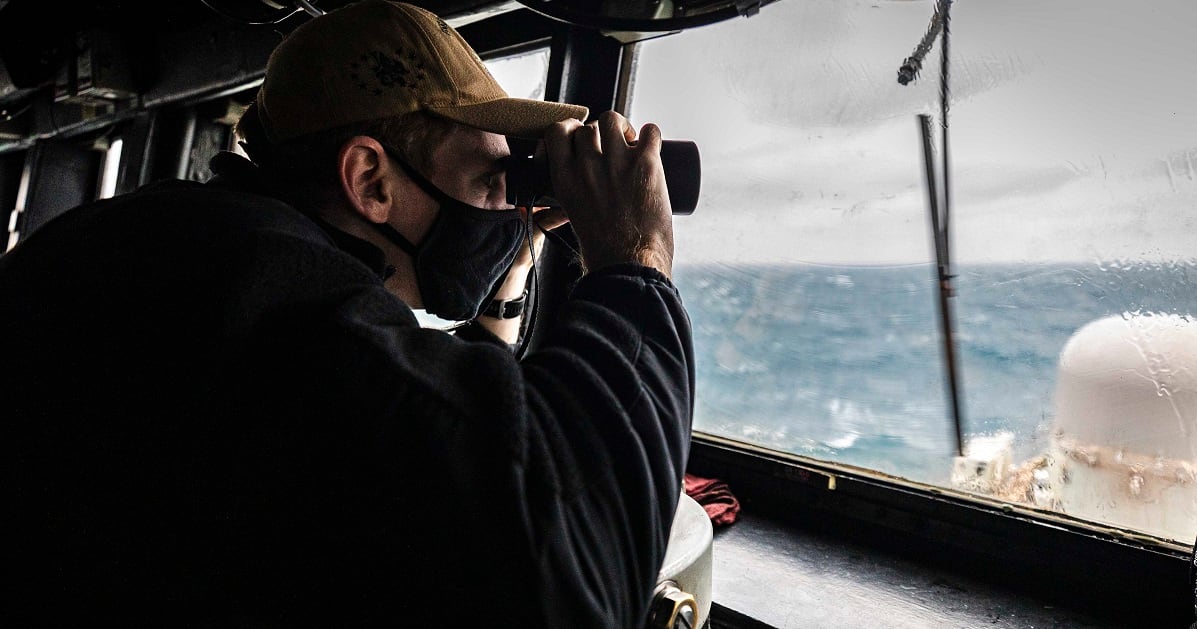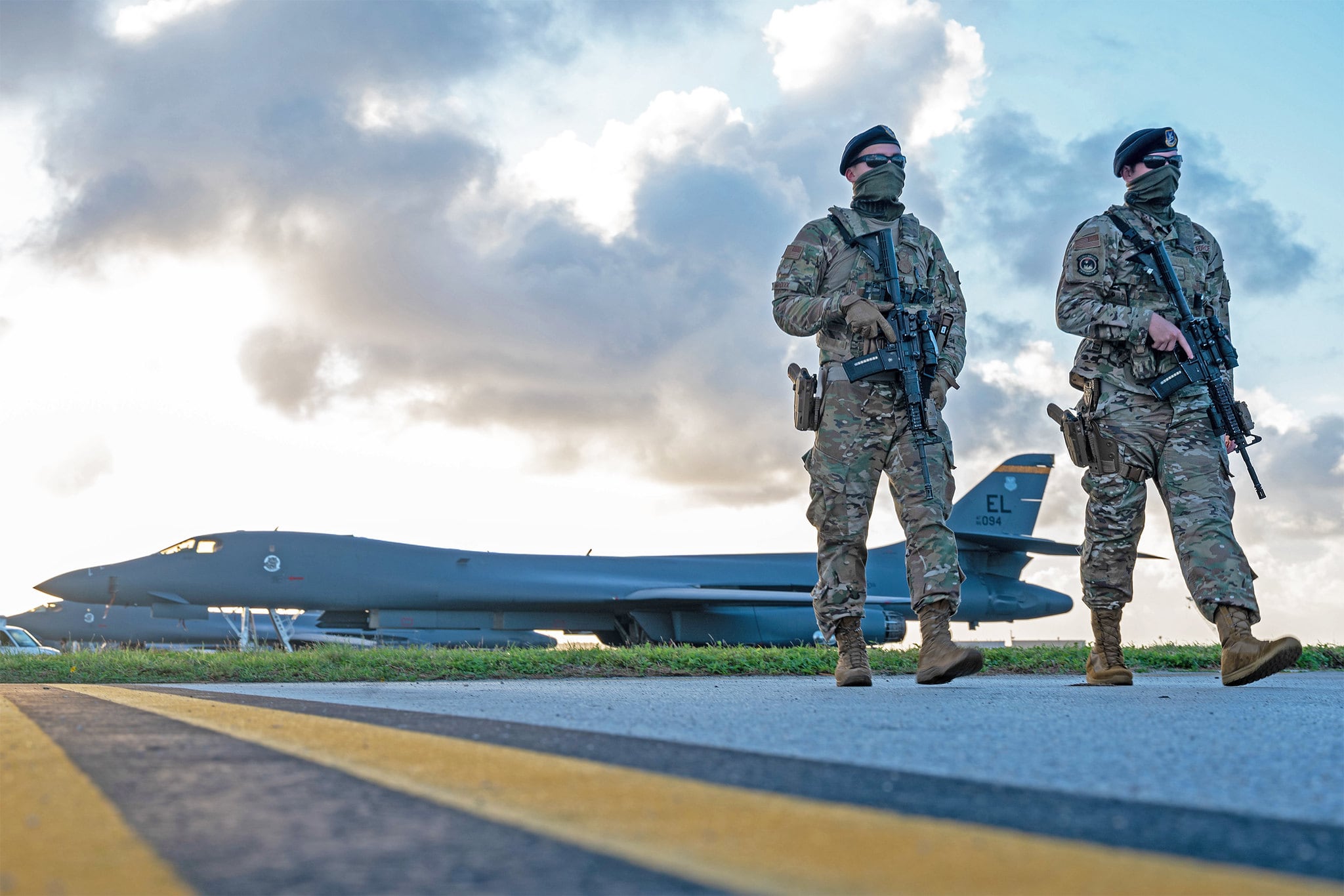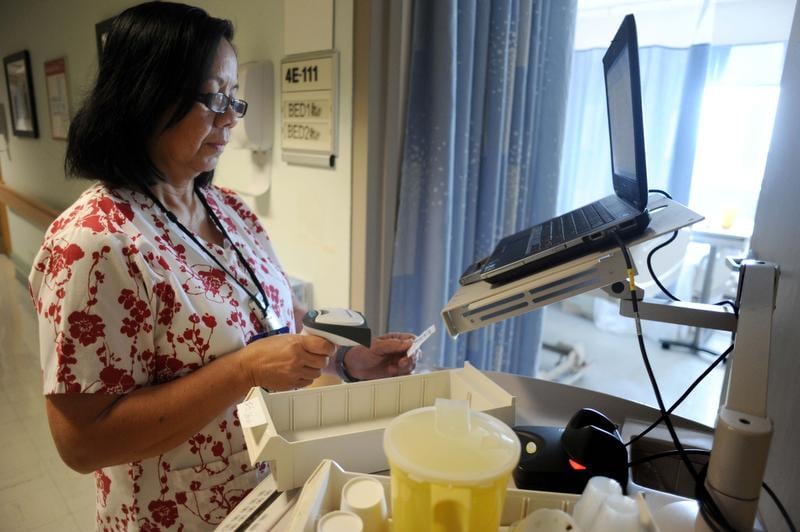WASHINGTON ― Warning that China’s missile arsenal threatens Guam and the United States will have to “fight for it,” the head of Indo-Pacific Command pitched lawmakers on building an Aegis Ashore missile defense facility to guard the U.S. territory.
Adm. Phil Davidson told the Senate Armed Services Committee Tuesday that the island needs protection as the home of 170,000 U.S. citizens and service members, a deepwater strategic port, fuel and munition stores and an airfield used to project U.S. power. Guam would be key to responding to any conflict in the Asia-Pacific region.
“Guam is a target today. It needs to be defended, and it needs to be prepared for the threats that will come in the future,” Davidson said. He added later: “China’s own Air Force has put out a propaganda video showing their H-6 bomber force attacking Andersen Air Force Base at Guam and distributed that quite publicly.”
While an Aegis Ashore system would counter ballistic missiles or cruise missiles launch from the air, land and sea, the island’s existing anti-ballistic missile capability ― the Terminal High Altitude Area Defense system ― “is not capable of meeting the current trajectory of threats from China,” Davidson said.
“It’s the key piece that we’re missing, that signals to the region that the U.S. is a reliable and committed security partner, that we are there to defend not only U.S. territory but our interests abroad,” Davidson said of Aegis Ashore. He added it would show China it “can’t knock Guam out with an easy shot and keep us out of the fight to present a fait accompli” against Taiwan.
Davidson has previously said the $1.6 billion system is his top priority among $27 billion in spending he’s proposed to continue a broader Pacific Deterrence Initiative through 2027. Aegis Ashore systems have been installed or are in progress in Romania and Poland.
RELATED

The proposed Guam Defense System would consist of Lockheed Martin’s Aegis Combat System Baseline 10; a solid-state radar such as the Raytheon SPY-6 or a variant of the Lockheed SPY-7; the BAE Systems Mark 41 Vertical Launching System, and SM-3 or SM-6 Missile, made by Raytheon.
Davidson argued in written testimony that the Army’s Integrated Air and Missile Defense Battle Command System and the Air Force’s Advanced Battle Management System wouldn’t fit the bill because they “are not yet fully developed.” Any “recommendations for additional studies, including a requirement for only mobile systems, disregard the immediacy and complexity of the threat (2026) and the absolute need to integrate fires across the region from a forward multi-domain command and control node west of the International Date Line,” he said.
While Davidson didn’t face any direct challenges to the plans during Tuesday’s Senate hearing, $77 million proposed for the system was scuttled from last year’s defense policy bill. More broadly, he acknowledged that funding for the initiative must compete with other priorities in the defense budget.
In January, the Missile Defense Agency was directed to reprogram $29 million in FY21 research funding to begin the architecture design for the Guam Defense System, he said.
In a wide-ranging hearing that touched on the Chinese military’s growing nuclear arsenal and naval fleet, Davidson expressed confidence the PDI is “absolutely a priority that will be addressed” in the president’s budget request being finalized for release in April. He cited a recent internal memo from Deputy Defense Secretary Kath Hicks.
“I’ve been encouraged by much of the draft material I’ve seen, but there’s a long way to go before the budget is finalized, and we’ll continue to engage with the department to see it through,” Davidson said.
In exchanges with lawmakers, Davidson reiterated support for a number of investments for the region, including ground-based precision fires; new Virginia- and Columbia-class submarines; range improvements in Alaska, Hawaii and Guam; improved joint exercises with allies, as well as added intelligence, surveillance and reconnaissance assets to provide an early warning in case of an attack.
One of the parents of the bipartisan PDI last year, SASC Chairman Jack Reed, said that “maintaining momentum” for the fund would be a “key focus” in drafting this year’s defense policy bill. The panel’s top Republican, Sen. Jim Inhofe, of Oklahoma, likewise signaled support.
“We’ve made a lot of progress ... through the European Defense Initiative by investing over $20 billion in the last five years,” Inhofe said in a statement. “We need to apply a similar level of focus effort and resources to our posture in the Pacific through PDI.”
Joe Gould was the senior Pentagon reporter for Defense News, covering the intersection of national security policy, politics and the defense industry. He had previously served as Congress reporter.





